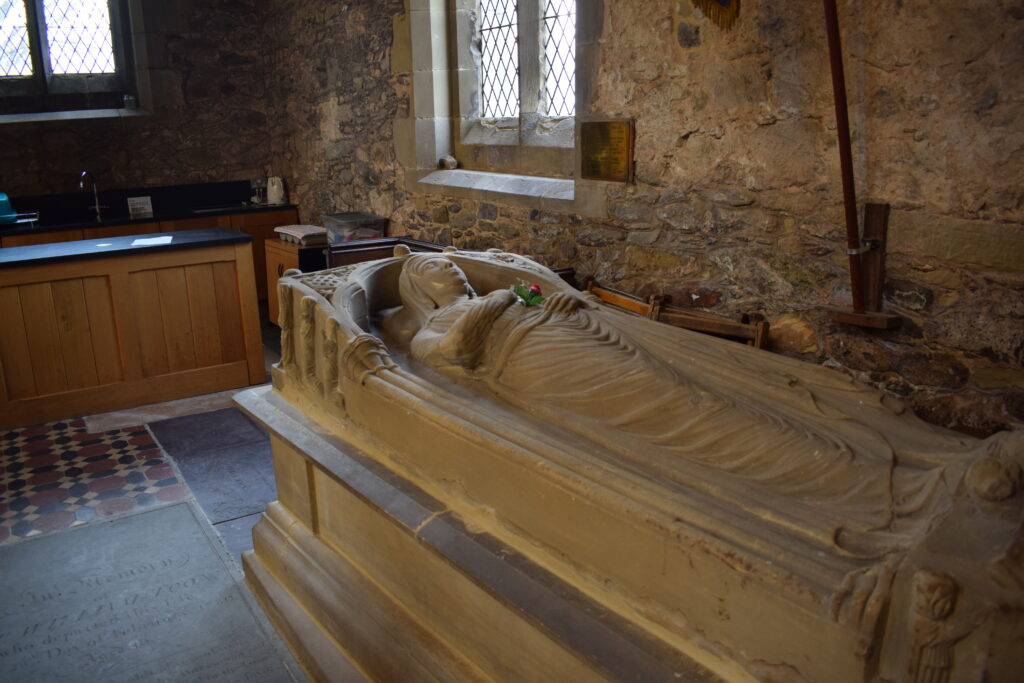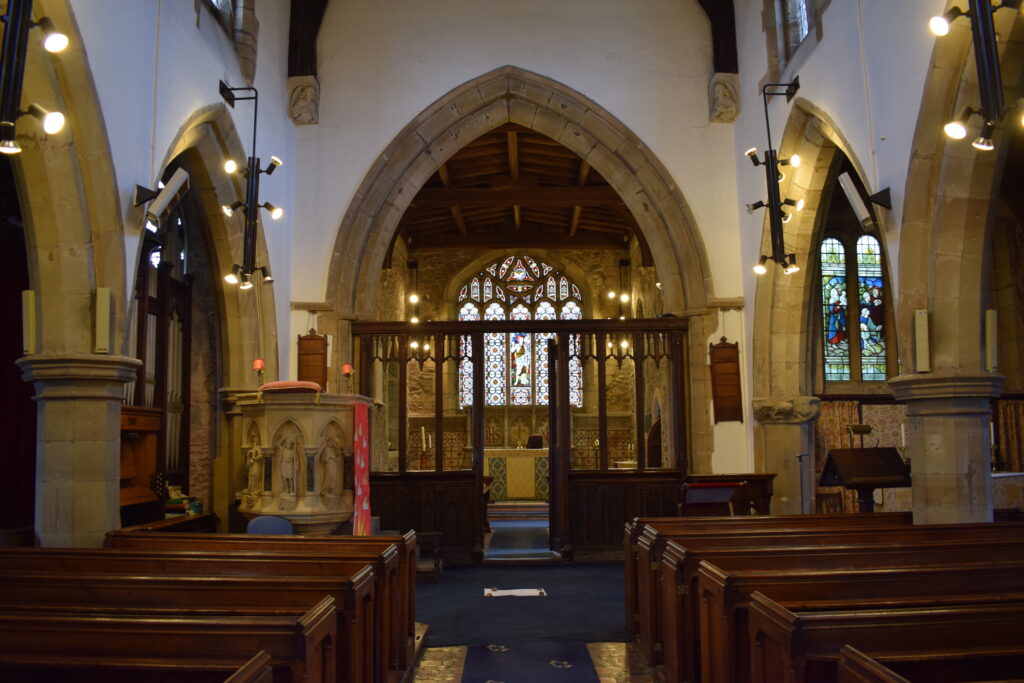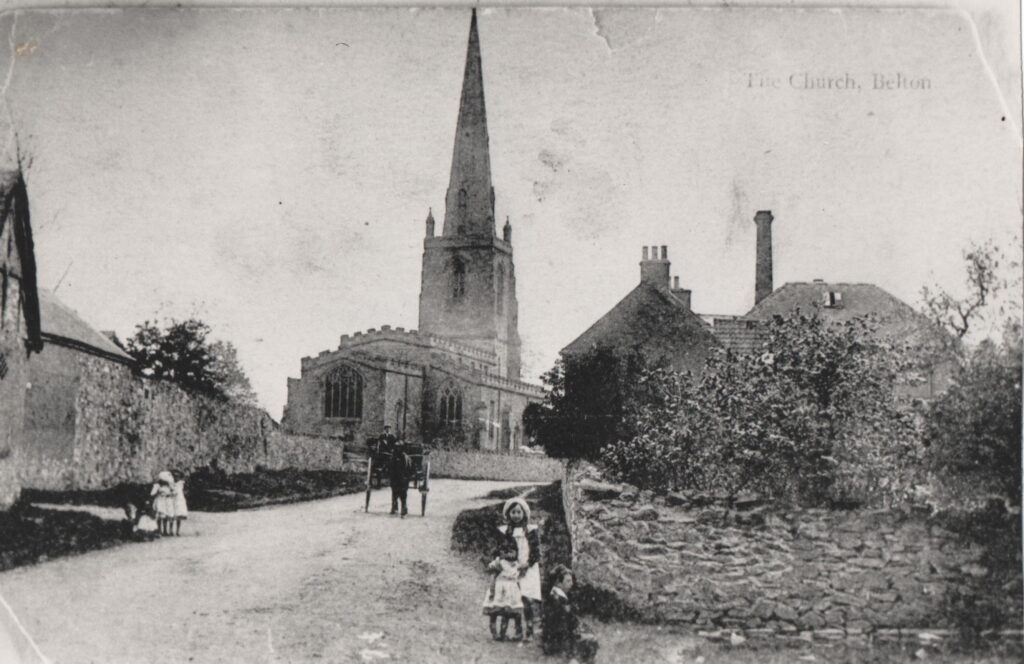The Church of St John the Baptist stands on the highest point of the village overlooking the market place which has changed little since medieval times. It is a simple medieval building with architecture that dates from 13th -15th centuries.

The church is first mentioned in a 13th century document when Nicholas de Verdun, wealthy Lord of the Manor of Belton, who held the patronage of the church, presented the first known Vicar of Belton William de Wudetone for induction.

Nicholas died in 1231 and was succeeded by his widowed daughter Roesia de Verdun. She founded the nearby Priory of Grace Dieu for nuns of the Order of St Augustine between 1239 and 1241. Roesia gave the Manor of Belton and the advowson of the Church to the priory in 1242 to provide an income for the nuns. There remained a close link between Church and Priory until the peaceful life of the church was interrupted by the Dissolution of the Priory in 1539 during Henry V111’s reign. The influential Beaumont family acquired the priory site and converted the existing buildings into a Tudor mansion.
The Priory church was destroyed and Roesia’s Tomb was moved to St John the Baptist Church.
The church building continued to undergo many alterations during the centuries. The clerestory windows were added to the nave during the15th century. Repairs were carried out to the tower, spire and wooden roofs; The mid 19th Century saw the installation of new floor tiles and pews. The chancel was restored in the Victorian period with new coloured glass windows inserted in memory of local families. A new pulpit replaced the wooden pulpit. A new porch was added.

The church today still retains many interesting features including, the tomb of Roesia de Verdun 1248, the medieval wooden chancel screen with its original bolts and lock, the 18th century parish church chest, 15th century roof beams “held up” by carved angels, 4 old oak doors and some interesting carvings and tomb stones. Follow this link for historical Points of Interest.

Belton village thrived during the Victorian era, becoming largely self-sufficient. In mid-19th century there were 700 people living in 144 properties, with 5 pubs, a work house, a blacksmiths, two mills, numerous farms, school, manor house, medieval Anglican Church, two non-conformist chapels, market place, village pond, sand pit, butchers, bakers, grocery shops, wheel wrights, shoe makers, and textile workers. The Charnwood Forest Canal, built in 1793, and the replacement Charnwood Forest Railway, built 1883, both skirted the southern extent of the parish.
Take a look at the Historic walk round Belton village.